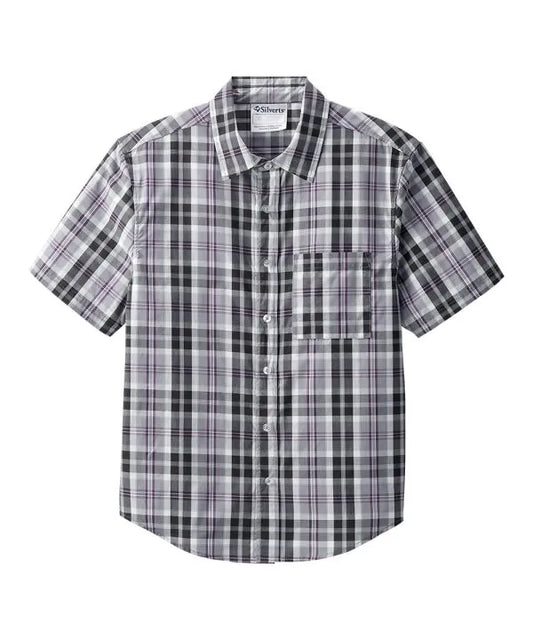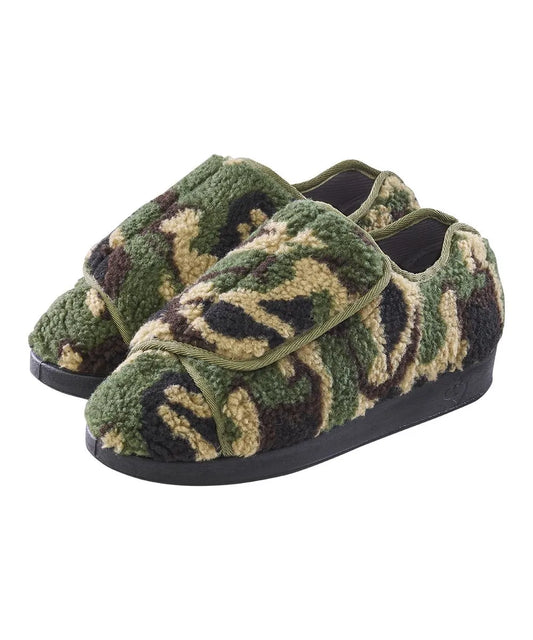By Nilufar Nattaq
Most of us don't give getting dressed much thought. However, it can be an annoying daily obstacle if you have restricted arm mobility as a result of shoulder surgery, a stroke, arthritis, or a chronic illness. It can be painful and exhausting to just wriggle into a jacket or pull a shirt overhead.
For this reason, shirts and jackets with side openings may be an excellent addition in your closet. These clothes slide on with minimal lifting or twisting because they open from the side rather than putting your arms in awkward positions. This guide will cover the various types of adaptive openings, how to apply them without strain, where to purchase them, how to style them for daily wear, and how to adapt your current wardrobe to suit your needs.
Types Of Adaptive Openings
Not every side opening is made equally. Different mobility levels, tastes, and style objectives respond better to different designs. Being aware of your options will enable you to select those that fit your daily routine and feel natural.
1. Full-Length Side Zippers
One side of the garment is fully opened by a full-length side zipper that extends from the hem to the armpit. Instead of pulling the garment over your head, you can now wrap it around your body. This is seen in clothing such as the Men’s Recovery Top with Zipper Access from June Adaptive.

-
Why it works: Without lifting your less mobile arm, you can zip the garment shut after draping it over your shoulder and slipping your arm into the more mobile sleeve first.
-
Best for: Recovery following shoulder dislocation, rotator cuff repair, or other injuries that impair overhead mobility.
-
Things to look for: Plastic coil zippers for flexibility rather than heavy metal ones, and zippers with fabric guards to avoid pinching.
2. Snap Closures
For people who prefer easy adjustment and speedy dressing, snaps are perfect. They can be positioned in strategic places like the waist and underarm or all the way along the seam. The Unisex Recovery Top with Snap Closures and the Men’s Recovery Zip Jacket from June Adaptive both feature side snaps for easy access and comfort.


-
Why it works: If you have limited stamina or require frequent rest periods while dressing, it is easier to fasten snaps one at a time.
-
Best for: Individuals who might need to open their clothing partially during the day to allow for heat, medical devices, or swelling.
-
Things to look for: Low-profile, flat snaps that make sitting or leaning comfortable.
3. Velcro or Hook-and-Loop Fasteners
For a smooth exterior, Velcro strips can be sewn inside a seam. They make it simple to close without using exact finger movements.
-
Why it works: Just press the sides together. No alignment, pinching, or pulling is required.
-
Best for: People with tremors, arthritis, or weak hands.
-
Things to look for: Longer strips for a more secure hold and soft-loop Velcro that won't irritate your skin.
4. Magnetic Closures
For people who want to close clothes almost effortlessly, magnets are revolutionary. Without much effort, they "find" one another and snap shut.
-
Why it works: Rather than manually guiding the closure, you can rely on the magnets to do the majority of the work.
-
Best for: People who struggle to coordinate both hands at once or have severe hand weakness.
-
Safety note: Before wearing magnetic closures, consult your doctor if you have a pacemaker.
How To Put On Side-Opening Clothes
The proper dressing technique can ease the burden and lessen strain, even with adaptive openings. Many people with restricted arm mobility find success with the following step-by-step approach.
Step 1: Get the garment ready
To make the garment as accessible and open as possible, lay the shirt or jacket flat on a table, bed, or your lap with the side opening fully undone. You won't have to deal with twisted fabric or tangled sleeves once you start dressing if you take the time to arrange it neatly. It also makes it easier to get through the process without fumbling awkwardly halfway through.
Step 2: Use Your Stronger Arm First
First, slide your less sore or more mobile arm into the sleeve. This makes it easier to guide the fabric over your body without pulling or stretching it too much by providing you with an anchor point to stabilize the garment while you position the remaining pieces. Additionally, starting with your stronger arm lessens the need for your weaker arm to perform the heavy lifting.
Step 3: Allow the Garment to Wrap Around Your Body
Gently bring the garment across your chest or back after placing your first arm. Do not force the fabric, but allow it to fall into place. Steer clear of pulling from the shoulder region as this may result in discomfort or strain. Rather, move in small, fluid motions and allow the fabric's weight to drape over your body naturally.
Step 4: Secure from Bottom to Top
Start attaching closures, such as snaps, Velcro, magnets, or zippers, from the hem up. This method avoids uncomfortable bunching at the waist or chest and guarantees that the garment hangs evenly from the beginning.
Step 5: Adjust for Comfort
Any folds along the back or under the arm should be smoothed. Make sure nothing is twisted or bunched if you're wearing layers, as this could lead to pressure points.
Where To Find These Specialty Items
It used to be difficult to find adaptive apparel, but times are changing. Designed for ease of wear, June Adaptive offers stylish side-opening shirts and jackets that mimic regular retail apparel. This adaptive apparel brand caters to people who want to feel confident, stylish, and at ease. The designs are straightforward, modern, and come in a range of colours that complement everyday attire.
Styling Tips For Unique Cuts
It is not necessary to conceal side openings. They could be a feature that make your clothing look more interesting. Here's how to style them to boost your self-esteem.
-
Include Closures as Part of the Style: Instead of attempting to hide the closures, if they are visible, you can try to use them as a focal point. Select clothing with embellishments such as contrasting-colored fabric-covered buttons, decorative toggles, or exposed zippers with sleek metallic finishes. Depending on the design, these elements can add a contemporary, edgy, or even vintage-inspired vibe.
-
Use Layering Creatively: If there's a tiny opening in your side-opening top that could show when you move, use it to add visual interest by covering it with something textured or colourful. A patterned turtleneck, a bright camisole, or even a tank with lace trim can give your outfit some depth and individuality. On chilly days, this method not only offers coverage but also warmth and comfort.
-
Experiment with Proportions: Fitted bottoms, such as slim pants, leggings, or pencil skirts, can counterbalance the looser or asymmetrical cut of a side-opening top. This contrast keeps your clothing from looking too boxy and gives it a sleek appearance. To maintain a flattering silhouette, opt for a top that cinches at the waist or a shorter, side-opening top if you like flowing skirts or wide-leg pants.
-
Try Different Colours and Fabrics: Unless you want them to be visible, side openings in soft, flowing materials like rayon, silk blends, or lightweight jersey will naturally flow over the closures. However, the side opening can become the focal point of the room with the use of striking colours, contrasting textiles, or textured panels.
How To Modify Existing Shirts
To take advantage of side openings, you don't need to replace your entire wardrobe. You can wear your current favourites more easily with a few tweaks.
-
Include a Side Zipper: A discrete, colour-matched zipper that blends in perfectly with the fabric can be inserted by a skilled tailor after carefully opening one side seam. For structured clothing, such as jackets, hoodies, and woven shirts, where the fabric doesn't stretch much on its own, this small adjustment makes an easy-entry pathway that works particularly well.
-
Install Velcro or Snaps: You can make a useful adaptation without significantly changing the garment's overall appearance by swapping out one side seam for a reinforced closure strip. Snaps offer a neater, slightly dressier look that can still be fastened without putting undue strain on your hands, while Velcro is ideal for casual clothing and home comfort because it is quick and fuss-free.
-
Consider using magnetic closures: Since the magnets in sew-in magnetic strips align and "click" into place with little assistance, they provide a contemporary, nearly effortless fastening method. They are a flexible choice for everything from blazers to regular T-shirts since they can be added to both crisp woven materials and stretchy knit fabrics.
-
Reduce or Modify Sleeve Length: It can be much simpler to pass your arm through without tugging or twisting if the armhole opening is widened or the sleeve length is changed. This adjustment can be used in conjunction with other adjustments to achieve a genuinely comfortable fit, and it is especially helpful for clothing with stiff or narrow sleeves.
-
Combine Modifications: To solve multiple dressing issues at once, combine two or more modifications for optimal convenience and adaptability. For instance, including a magnetic tab at the shoulder and a side zipper for effortless access can increase your range of motion and speed up dressing.
Conclusion
Side-opening shirts and jackets are more than just clothes. They help you move through your day with more confidence, keep your sense of style, and dress painlessly. There is a solution out there that suits your needs and lifestyle, whether you choose to buy premium adaptive clothing, purchase adaptive clothing from mainstream retailers, or alter your own wardrobe.
To discover more adaptive fashion ideas and accessible solutions, sign up for the June Adaptive newsletter. You’ll get firsthand updates on the newest products and recovery-friendly styles.















